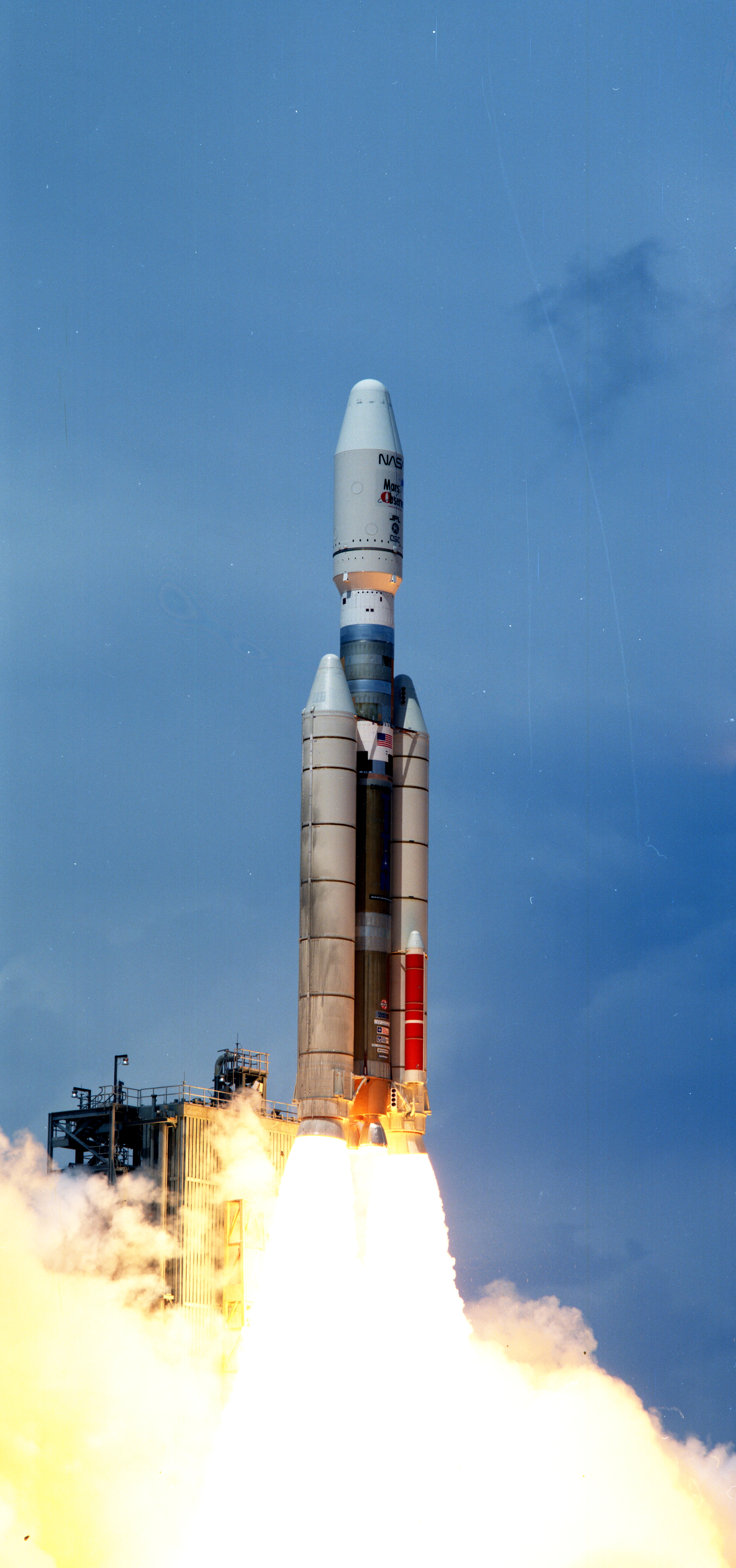
Commercial Titan III
In-activeLockheed Martin (LMT)
Jan. 1, 1990
Description
The Commercial Titan III, also known as CT-3 or CT-III, was an American expendable launch system, developed by Martin Marietta during the late 1980s and flown four times during the early 1990s. It was derived from the Titan 34D, and was originally proposed as a medium-lift expendable launch system for the US Air Force, who selected the Delta II instead. Development was continued as a commercial launch system, and the first rocket flew in 1990. Due to higher costs than contemporary rockets such as the Ariane 4, orders were not forthcoming, and the CT-3 was retired in 1992.
Specifications
-
Minimum Stage
2 -
Max Stage
3 -
Length
47.3 m -
Diameter
3.05 m -
Fairing Diameter
3.05 m -
Launch Mass
680.0 T -
Thrust
―
Family
-
Name
Commercial Titan III -
Family
― -
Variant
III -
Alias
― -
Full Name
Commercial Titan III
Payload Capacity
-
Launch Cost
― -
Low Earth Orbit
14742.0 kg -
Geostationary Transfer
Orbit
4990.0 kg -
Direct Geostationary
― -
Sun-Synchronous Capacity
―
Lockheed Martin
Commercial
None
LMT 1953Lockheed Martin's Space Division started in the production of missiles and later ICBM's in the 1950s. Their TITAN missile system was used for 12 Gemini spacecraft and the Voyager probes. They have worked largely in collaboration with NASA on many of their probes, landers, and spacecraft, and hope to play a key role in NASA's return to the moon in 2024.
Commercial Titan III | Mars Observer
Lockheed Martin | United States of AmericaCape Canaveral SFS, FL, USA
Sept. 25, 1992, 5:05 p.m.
Commercial Titan III | Intelsat 604
Lockheed Martin | United States of AmericaCape Canaveral SFS, FL, USA
June 23, 1990, 11:19 a.m.
Commercial Titan III | Intelsat 603
Lockheed Martin | United States of AmericaCape Canaveral SFS, FL, USA
March 14, 1990, 11:52 a.m.
Falcon 9
Starlink Group 15-12
Space Launch Complex 4E - Vandenberg SFB, CA, USAA batch of 27 satellites for the Starlink mega-constellation - SpaceX's project for space-based Internet communication system.
Electron
Raise and Shine (RAISE-4)
Rocket Lab Launch Complex 1B - Rocket Lab Launch Complex 1, Mahia Peninsula, New ZealandRAISE-4 (RApid Innovative payload demonstration Satellite-4) is a Japan Aerospace Exploration Agency (JAXA) satellite for on-orbit demonstrations of …
Kuaizhou 11
DEAR-5
Launch Area 95A - Jiuquan Satellite Launch Center, People's Republic of ChinaDEAR-5 is a commercial in-orbit payload and micro-gravity experiments hosting spacecraft developed by Chinese commercial company AZSPACE for various …
Long March 12
SatNet LEO Group 16
Commercial LC-2 - Wenchang Space Launch Site, People's Republic of ChinaA batch of Low Earth Orbit communication satellites for the Chinese state owned SatNet constellation operated by the China Satellite Network Group. …
Falcon 9
Starlink Group 6-90
Space Launch Complex 40 - Cape Canaveral SFS, FL, USAA batch of 29 satellites for the Starlink mega-constellation - SpaceX's project for space-based Internet communication system.

